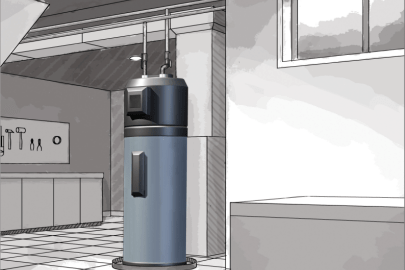How to Maintain Your Home's Hot Water System EffectivelyKey Guidance on Caring for Your Home's Hot Water System
How to Maintain Your Home's Hot Water System EffectivelyKey Guidance on Caring for Your Home's Hot Water System
Blog Article
This article which follows about How to Maintain a Hot Water Heater in a Few Simple Steps is truly entertaining. Give it a try and draw your own personal ideas.

Hot water is necessary for day-to-day convenience, whether it's for a refreshing shower or cleaning dishes. To ensure your hot water system runs effectively and lasts longer, routine upkeep is vital. This write-up provides practical tips and insights on how to maintain your home's hot water system to avoid interruptions and expensive repair services.
Introduction
Maintaining your home's hot water system might seem difficult, but with a few simple steps, you can ensure it operates smoothly for years to come. This overview covers every little thing from recognizing your warm water system to DIY upkeep suggestions and understanding when to contact expert assistance.
Value of Keeping Your Warm Water System
Normal upkeep not only expands the life-span of your hot water system but also guarantees it operates successfully. Disregarding maintenance can result in decreased efficiency, greater power expenses, and even premature failing of the system.
Indicators Your Warm Water System Requirements Maintenance
Knowing when your warm water system requires interest can prevent significant concerns. Look out for indicators such as irregular water temperature level, odd noises from the heating unit, or rusty water.
Flushing the Water Heater
Flushing your hot water heater eliminates sediment build-up, enhancing efficiency and lengthening its life.
Monitoring and Replacing Anode Rods
Anode poles stop deterioration inside the storage tank. Examining and replacing them when worn out is crucial.
Complicated Problems Requiring Professional Aid
Instances consist of major leaks, electric troubles, or if your hot water heater is regularly underperforming.
Routine Specialist Upkeep Perks
Professional maintenance can consist of detailed assessments, tune-ups, and ensuring conformity with security standards.
Inspecting and Changing Temperature Setups
Readjusting the temperature settings ensures ideal performance and safety and security.
Do It Yourself Tips for Maintenance
You can execute a number of upkeep jobs yourself to maintain your hot water system in top problem.
Checking for Leakages
On a regular basis inspect pipelines and connections for leakages, as these can cause water damage and greater bills.
Recognizing Your Hot Water System
Before diving right into maintenance jobs, it's useful to recognize the fundamental components of your warm water system. Generally, this consists of the water heater itself, pipelines, anode rods, and temperature level controls.
Monthly Upkeep Tasks
Regular month-to-month checks can help capture minor concerns before they rise.
Testing Stress Relief Valves
Evaluating the stress relief valve guarantees it functions properly and prevents extreme pressure accumulation.
Shielding Pipes
Insulating warm water pipes lowers heat loss and can conserve energy.
When to Call an Expert
While do it yourself maintenance is helpful, some problems call for expert experience.
Conclusion
Routine upkeep of your home's hot water system is necessary for efficiency, durability, and price financial savings. By following these ideas and recognizing when to seek expert aid, you can ensure a reputable supply of warm water without unexpected interruptions.
How to Maintain an Instant Hot Water Heater
Before tinkering with your hot water heater, make sure that it’s not powered on. You also have to turn off the main circuit breaker and shut off the main gas line to prevent accidents. Also turn off the water valves connected to your unit to prevent water from flowing into and out of the appliance. 2. When you’re done, you have to detach the purge valves’ caps. These look like the letter “T” and are situated on either side of the water valves. Doing so will release any pressure that has accumulated inside the valves while at the same time avoid hot water from shooting out and burning your skin. 3. When the purge valves’ caps are removed, you have to connect your hosing lines to the valves. Your unit should have come with three hoses but if it didn’t, you can purchase these things from any hardware or home repair shops. You can also get them from retail stores that sell water heating systems. Read the user’s manual and follow it to complete this task properly. When the hosing lines are connected, open the purge port’s valves. 4. You should never use harsh chemical cleaners or solutions when cleaning your unit. Make use of white vinegar instead. It should be undiluted and you’ll probably use about 2 gallons. 5. Now flush your water heater. This task should probably take about 40 minutes. We can’t give you specific directions for this because the procedure is carried out depending on the type, model and brand of your heater. With that being said, refer to the user’s manual. 6. When you’re done draining the unit, you have to turn off the purge port valves again. Remove the hosing lines that you earlier installed on each of the water valves. Put the valve caps (purge port) back in their respective places and be very careful so as not to damage the rubber discs that are found inside these caps. 7. Now that everything’s back in place, check your user’s manual again to find out how to reactivate your water heating system. 8. Once it is working, turn one of your hot water faucets on just to let air pass through the heater’s water supply pipes. Leave the tap on until water flows smoothly out of it. https://www.orrplumbing.com/blog/2014/september/how-to-maintain-an-instant-hot-water-heater/

We had been shown that article on Tips on Maintaining a Water Heater through a friend on a different site. Feel free to take the time to promote this content if you enjoyed reading it. I am grateful for your time. Revisit us soon.
Call Today Report this page